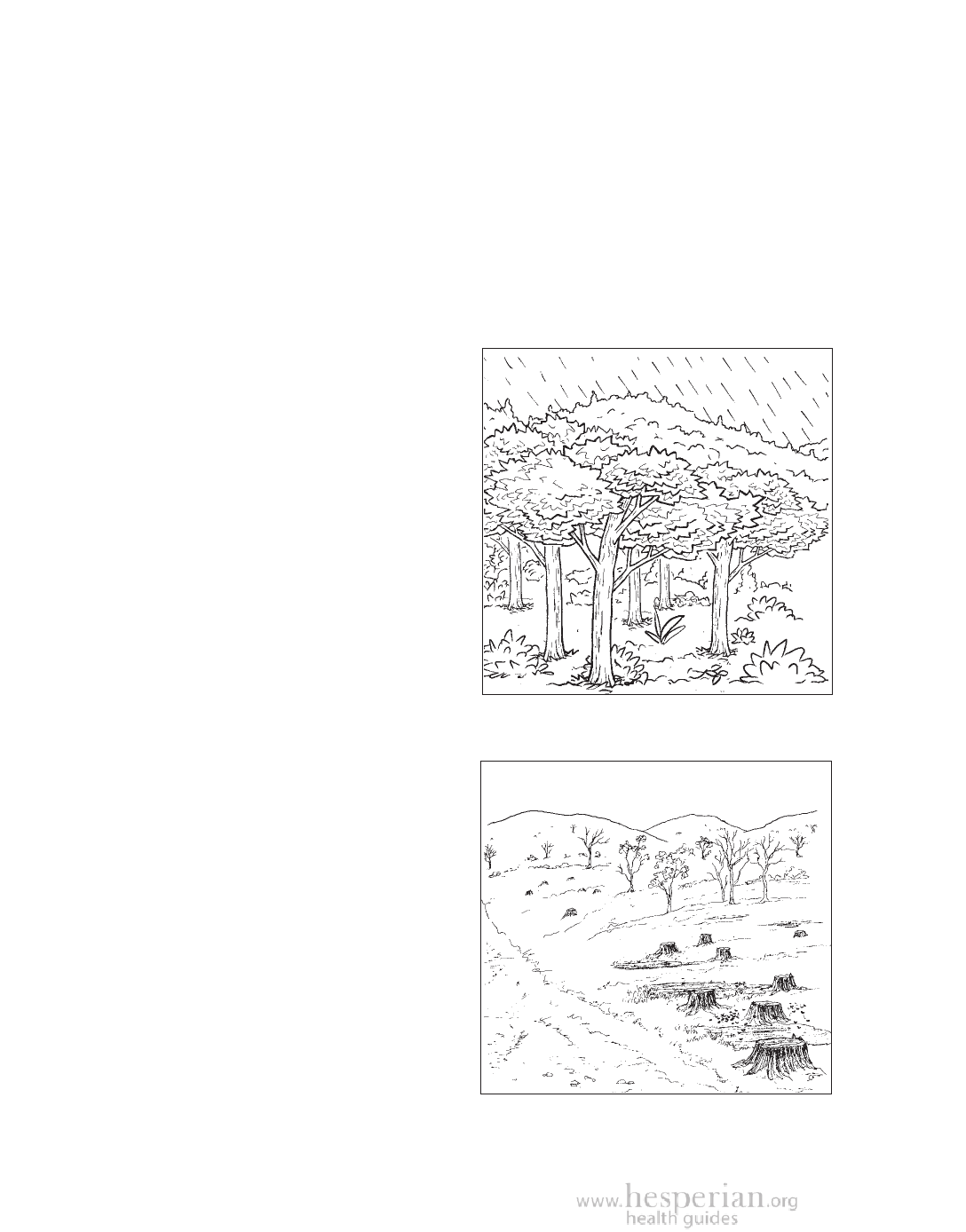
6 Promoting Communit y Environmental Health
A hill with no trees is like a house with no roof
The hills and mountains on the coast of Ecuador were once covered in thick
tropical forests. Mangrove trees grew where fresh water from the rivers mixed
with salt water from the sea. The mangroves protected the coast from storms
and were home to many kinds of fish and shellfish. Bamboo trees grew along
the streams, keeping their banks from being worn down or washed away
(erosion). Forests were filled with giant ceibo trees that gave shade. Their deep
roots held water and soil. Carob trees grew on the steep mountain slopes,
holding the soil in place and keeping
the hillsides from falling down.
Leaves from the trees enriched the
soil when they fell to the ground.
The forests were home to people,
and also to deer, birds, insects,
lizards, and countless other animals.
People built their houses out of
bamboo and palm tree leaves. There
were animals to hunt, wild berries
to eat, and water and rich soil for
gardens and small farms.
But over the last 100 years, many
of the trees were cut down to make
a railroad and to build houses. Then
a company from Japan came and cut
down most of the remaining trees,
using the railroad to carry the wood
to a port on the coast, and shipped
it to Japan. Because tropical forest
trees are very strong, they sold for
a good price. When the trees were
gone, the company left. The railroad
fell into disrepair. Over time, it was
abandoned.
before
Now, the mountains on the coast
of Ecuador look like a desert. The hills
are brown and there is no shade. In
the dry season, the soil blows away
and the air is full of dust. In the rainy
season, the soil turns to mud and the
hillsides tumble down. When the El
Niño storms came in 1997, there were
no trees to protect the villagers from
their destructive force.
after
A Community Guide to Environmental Health 2012